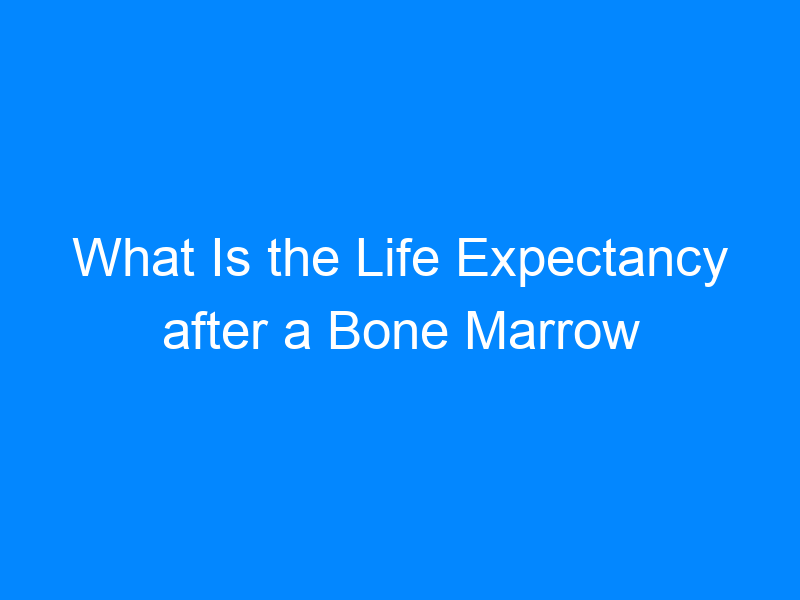A bone marrow transplant is a medical procedure that involves transfer of healthy blood-forming or hematopoietic stem cells into the patient’s body with an aim to replace their damaged or diseased bone marrow. This is why bone marrow transplant is also referred to as a stem cell transplant. It can be basically categorized as autologous and allogeneic bone marrow transplant based on the donor of stem cells. BMT is a treatment option for various blood and bone marrow disorders or diseases. The procedure can be used to:
- Enable safe treatment of the patient’s condition after high doses of chemotherapy or radiation and then replacing the bone marrow damaged by chemo treatment
- Reboot the immune system to fight the diseased or damaged marrow with new healthy stem cells and help kill cancer cells
- Production of new healthy blood cells in adequate amount
Blood and bone marrow related cancers may need other treatments as well in conjugation with BMT. The diseases that affect production of blood cells can also be treated by infusion of healthy bone marrow cells from the patient’s own body or from a healthy, genetically compatible donor. The marrow or stem cells from the donor are used to replace diseased cells which allows the body to maintain healthy levels of red blood cells, white blood cells, and platelets.
Over the years, the life expectancy, survival rate and quality of life post bone marrow transplant procedure have considerably improved. The more accurate genetic matching tests for donors, the more are the chances of success. The transplant is followed by an antibiotic regimen to control infections and complete post-transplant care. The recovery and success are greatly influenced by the post-transplant care regime.
Bone marrow transplants are offered by various hospitals in India, for treatment of cancers and other diseases. The top hospitals have a special dedicated unit for BMT patient with stringent infection control measures. BMT treatment cost in India is considerably lower than many other nations, especially in the West. This attracts many international patients as they get to save a significant amount of money without compromising on the standard of care.
Life expectancy after a bone marrow transplant
It has been reported that stem cell transplants for patients who had nonmalignant diseases has shown a much better success rate, around 70% to 90 % survival with a matched sibling donor while with unrelated donors it was 36% to 65%.
Post-transplant survival rates for patients suffering from acute leukemia in remission have been reported as 55% to 68% with related donors and 26% to 50% for the unrelated donors.
In case of an autologous bone marrow transplant, where the patient’s own bone marrow cells are taken before the chemotherapy and reinfused afterwards, has improved survival rates with certain cancers such as Wilms tumor, Ewing sarcoma, germ cell tumor and neuroblastoma.
However, autologous bone marrow transplants have not proved to enhance the survival rates with other pediatric malignant cancers, such as metastatic alveolar rhabdomyosarcoma, or metastatic Ewing sarcoma.
Patients who are in remission after cancer or have stabilized disease condition are generally known to show a much better result than patients with the disease in later stages or relapse.
BMT in younger patients is expected to have a higher chance of success. Also, if both the donor and recipient are cytomegalovirus (CMV) negative, the BMT survival rates are higher.
Risks and complication of bone marrow transplant
As with most medical procedures, there is a possibility of certain risks and complications with BMT also. Some patients only experience minimal problems after a bone marrow transplant, while others may suffer from serious complications that require appropriate treatment or hospitalization. Complications can even be life-threatening in certain situations.
Every individual is different and will have a different recovery experience. The doctor will discuss the particular risks before the procedure. These are determined on the basis of many factors, including the disease or condition that needs treatment with a BMT, the type of transplant, and patient’s age and overall health status.
Possible complications that can occur after a bone marrow transplant include:
- Graft-versus-host disease (associated with allogeneic transplant only)
- The graft failure
- Damage to organs
- Infections
- Infertility
- New cancers
- Cataracts
Graft-versus-host disease (GVHD) is a serious risk when stem cells used in the transplant are harvested from a donor. Patients who receive an allogeneic transplant, transfusion of stem cells from a donor, there is a risk of developing graft-versus-host disease (GVHD). Although, proper matching tests limit the risk of this complication, it is still a considerable problem. This condition arises when the new stem cells from the donor make the new immune system which starts to recognize the body’s tissues and organs as foreign and attacks them.
GVHD can happen any time after the transplant. Many recipients who have an allogeneic transplant get this disease at some point. Unrelated donor increase the risk of GVHD, but it can potentially happen to anyone who receives a bone marrow transplant from a donor. GVHD is of basically two types – acute and chronic. Acute GVHD generally happens during the first few months after the transplant and typically affects skin, digestive tract or liver. Whereas, chronic GVHD develops later and can affect multiple organs.




